The Turner Prize: A parade of chancers?
29 September 2014


30 is an awkward anniversary, when bolshy youth is supposed to give way to a new maturity. So, after a history of tabloid headlines and tantrums, is the Turner Prize at last ready to settle down? While it has helped launch the careers of many Britain’s best contemporary artists, it also has a reputation for backing wide boys and girls. Ahead of the prize ceremony, Newsnight's culture correspondent STEPHEN SMITH asks just what is the Turner good for?
This autumn, Prince Harry and the Turner Prize both celebrate their 30th birthdays. One’s a favourite Fleet Street target, once in the papers for all the wrong reasons, but now perhaps settling down to a mature and dignified role within the establishment. The other’s Prince Harry.

Time was when the first sere leaf on the trees would find newspaper editors rubbing their hands at the prospect of the Turner, which is awarded to "a British artist under 50 for an outstanding exhibition or other presentation of their work in the 12 months preceding".
There was plenty of good knockabout copy in entries like Tracey Emin’s tousled bedsheets and Martin Creed’s lights going on and off. The suggestion was that this was art purchased wholesale from the same outlet where the emperor went for his new transparent garments. Was it actually art at all, in fact?
The distinguished Australian art historian Robert Hughes, author of the The Shock of the New, certainly didn’t think so. In 2002, when the Turner had yet to reach its 20th anniversary, he called it "soggy and flaccid", adding: "You can't just expect terrific artists to pop up on cue. We knew you didn't get a Titian every few years. Now we know you don't get a (Damian) Hirst every five minutes."
Hirst won the Turner in 1995, but not even his best-known piece, a pickled shark (formally known as The Impossibility of Death in the Mind of Someone Living) could mollify the two-fisted Aussie critic, who also happened to be a passionate deep-sea angler.
He said: "It's pathetic, sub-Hemingway bull. I think it might have been interesting if he'd gone out and caught it himself. There's about as much risk in it as if you went down to Billingsgate and bought yourself a couple of herring."
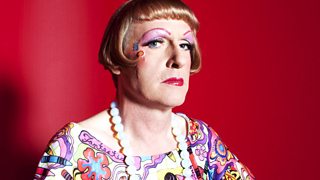
The thing about shock is that it wears off
So how do Turner contenders emerge? In his entertaining BBC Reith lectures last year, the transvestite potter Grayson Perry, himself the prize-winner in 2003, described a coterie of arts world figures who bestowed "validation" or acceptability on certain artists and their work – while withholding it from others.
Untouchable behind the art world’s ultimate velvet rope, these tastemakers included agents, dealers, galleryists, critics and collectors ("oligarchs", according to Perry). Last, and by all means least, was the general public. "Many artists don’t need the public at all," he added, referring to those whose work is readily brokered directly to the super-rich.
In his tongue-in-cheek way, the cross-dressing pot-thrower went on to argue that once-praised qualities, such as beauty and draughtsmanship, had become rather frowned upon, and seen as elitist. Instead, "seriousness" was the most valuable commodity in contemporary art. But lapel-grabbing, tabloid-tickling shock was almost as good.
As Robert Hughes might have told the Turner circus, though, the thing about shock is that it wears off. Look back on the last few years of the prize and you find commentators complaining that apparently wilful attempts to court controversy have become a turn-off.
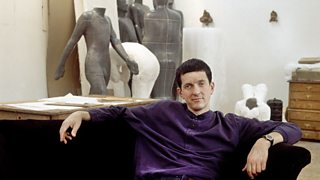
What grabs their attention, paradoxically, is an artist carrying off the £25,000 top prize with supposedly old-fashioned techniques, such as painting, as Richard Wright did in 2009 with exquisite works in gold leaf.
But a closer look at the history of the Turner reveals a more nuanced story than the headlines of shock and ore. The roll-call of winners and runners-up, widely thought to be a parade of chancers and flashes-in-the-pan, turns out to include a number of inarguably significant figures in British post-war art.
It’s forgotten that among the artists in contention for the award back in 1989 was a promising newcomer called Lucian Freud (who, in his early sixties, was a dozen years older than the present upper age limit).
The real shock is that we may have the Turner to thank for helping to develop the careers of other artists who have a following among the public and not just Grayson Perry’s in-crowd: Howard Hodgkin, Gilbert and George, Derek Jarman, Patrick Caulfield, Paula Rego, Rachel Whiteread, Antony Gormley, Steve McQueen – I could go on.
As for this year’s Turner entries, they include a sobering blast from the real world. Ciara Phillips, who works in screenprinting, photography and textiles, has collaborated with campaigners to highlight the low pay and poor working conditions of migrant workers. Her work is also winningly bold and eye-catching.
So, like a youngish royal prince eschewing strip billiards in favour of admirable charity work, the Turner Prize may at last be waking up to new priorities. But if you find it still doesn’t float your boat, you can always pop into the display of extraordinary late works by the Fighting Temeraire man, JMW Turner himself.
On BBC News
The 2014 nominees
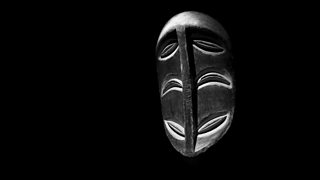
Duncan Campbell
The Dublin-born Glasgow School of Art graduate is nominated for his film It For Others, a reflection on a historical documentary about African art. The video was part of Scotland's entry in last year's Venice Biennale.

Ciara Phillips
Another Glasgow-based nominee, Phillips was born in Canada and has been nominated for her two-month Workshop project in London's The Showroom gallery, where she invited artists, designers, and local women's groups to produce new screen prints. Watch a film about the installation.
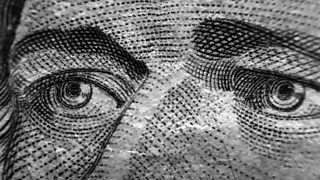
James Richards
The Cardiff-born artist works with video, piecing together clips drawn from a variety of sources, from YouTube to charity shop VHS tapes and self-shot footage. He is nominated for Rosebud, a 13-minute black-and-white film also shown at the Venice Biennale.
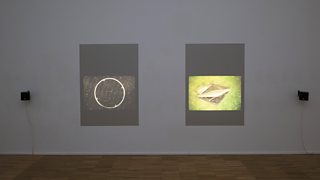
Tris Vonna-Michell
Another GSA graduate, Vonna-Michell is nominated for his Brussels installation Postscript: Berlin, which uses two slide projections and an audio narration relating to his mother's childhood in Berlin. The Essex-born artist is known for his fast-paced spoken word live performances.
Art and Artists: Highlights
-
![]()
Ai Weiwei at the RA
The refugee artist with worldwide status comes to London's Royal Academy
-
![]()
BBC Four Goes Pop!
A week-long celebration of Pop Art across BBC Four, radio and online
-
![]()
Bernat Klein and Kwang Young Chun
Edinburgh’s Dovecot Gallery is hosting two major exhibitions as part of the 2015 Edinburgh Art Festival
-
![]()
Shooting stars: Lost photographs of Audrey Hepburn
An astounding photographic collection by 'Speedy George' Douglas
-
![]()
Meccano for grown-ups: Anthony Caro in Yorkshire
A sculptural mystery tour which takes in several of Britain’s finest galleries
-
![]()
The mysterious world of MC Escher
Just who was the man behind some of the most memorable artworks of the last century?
-
![]()
Crisis, conflict... and coffee
The extraordinary work of award-winning American photojournalist Steve McCurry
-
![]()
Barbara Hepworth: A landscape of her own
A major Tate retrospective of the British sculptor, and the dedicated museums in Yorkshire and Cornwall
Art and Artists
-
![]()
Homepage
The latest art and artist features, news stories, events and more from BBC Arts
-
![]()
A-Z of features
From Ackroyd and Blake to Warhol and Watt. Explore our Art and Artists features.
-
![]()
Video collection
From old Masters to modern art. Find clips of the important artists and their work











